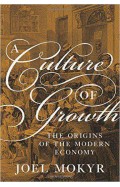- Home
- Non Fiction
- Education and Reference
- Science
- The Story of Architecture - From Prehistory to Climate Emergency
The Story of Architecture - From Prehistory to Climate Emergency
By: Barnabas Calder
-
Rs 2,515.50
- Rs 2,795.00
- 10%
You save Rs 279.50.
Due to constant currency fluctuation, prices are subject to change with or without notice.
The story of architecture is the story of humanity. The buildings we live in, from the humblest pre-historic huts to today's skyscrapers, reveal our priorities and ambitions, our family structures and power structures. And to an extent that hasn't been explored until now, architecture has been shaped in every era by our access to energy, from fire to farming to fossil fuels.
In this ground-breaking history of world architecture, Barnabas Calder takes us on a dazzling tour of some of the most astonishing buildings of the past fifteen thousand years, from Uruk, via Ancient Rome and Victorian Liverpool, to China's booming megacities. He reveals how every building - from the Parthenon to the Great Mosque of Damascus to a typical Georgian house - was influenced by the energy available to its architects, and why this matters.
Today architecture consumes so much energy that 40% of the world's greenhouse gas emissions come from the construction and running of buildings. If we are to avoid catastrophic climate change then now, more than ever, we need beautiful but also intelligent buildings, and to retrofit - not demolish - those that remain. Both a celebration of human ingenuity and a passionate call for greater sustainability, this is a history of architecture for our times.
The story of architecture is the story of humanity. The buildings we live in, from the humblest pre-historic huts to today's skyscrapers, reveal our priorities and ambitions, our family structures and power structures. And to an extent that hasn't been explored until now, architecture has been shaped in every era by our access to energy, from fire to farming to fossil fuels.
In this ground-breaking history of world architecture, Barnabas Calder takes us on a dazzling tour of some of the most astonishing buildings of the past fifteen thousand years, from Uruk, via Ancient Rome and Victorian Liverpool, to China's booming megacities. He reveals how every building - from the Parthenon to the Great Mosque of Damascus to a typical Georgian house - was influenced by the energy available to its architects, and why this matters.
Today architecture consumes so much energy that 40% of the world's greenhouse gas emissions come from the construction and running of buildings. If we are to avoid catastrophic climate change then now, more than ever, we need beautiful but also intelligent buildings, and to retrofit - not demolish - those that remain. Both a celebration of human ingenuity and a passionate call for greater sustainability, this is a history of architecture for our times.
The Story of Architecture - From Prehistory to Climate Emergency
By: Barnabas Calder
Rs 2,515.50 Rs 2,795.00 Ex Tax :Rs 2,515.50
Zubin Mehta: A Musical Journey (An Authorized Biography)
By: VOID - Bakhtiar K. Dadabhoy
Rs 892.50 Rs 1,050.00 Ex Tax :Rs 892.50
Culture City How Culture Leaves Its Mark on Cities and Architecture Around the World
By: Wilfried Wang
Rs 3,997.50 Rs 7,995.00 Ex Tax :Rs 3,997.50
The Story of Gothic Architecture (Story Of... (Prestel))
By: Francesca Prina
Rs 1,950.75 Rs 2,295.00 Ex Tax :Rs 1,950.75
Sound Materials Innovative SoundAbsorbing Materials for Architeure and Design
By: tyler adams
Rs 8,495.75 Rs 9,995.00 Ex Tax :Rs 8,495.75
No similar books from this author available at the moment.
Hey Duggee: Numbers: Wipe-Clean Board Book
By: Hey Duggee
Rs 1,795.50 Rs 1,995.00 Ex Tax :Rs 1,795.50
Zubin Mehta: A Musical Journey (An Authorized Biography)
By: VOID - Bakhtiar K. Dadabhoy
Rs 892.50 Rs 1,050.00 Ex Tax :Rs 892.50
The Story of Architecture - From Prehistory to Climate Emergency
By: Barnabas Calder
Rs 2,515.50 Rs 2,795.00 Ex Tax :Rs 2,515.50














-120x187.jpg?q6)
















